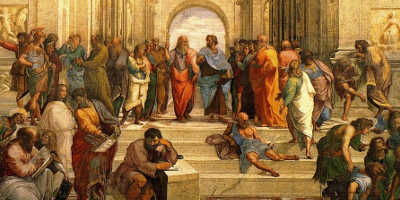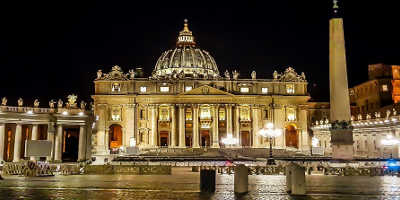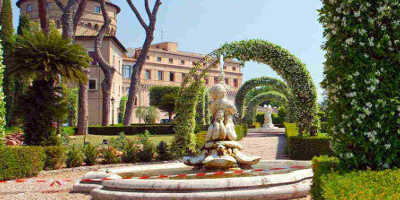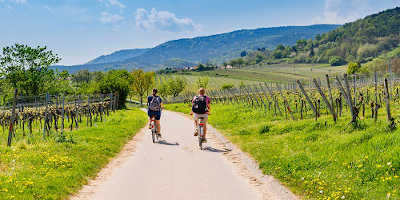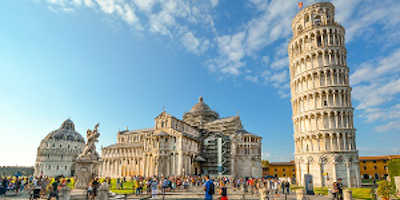Who is St Peter?
We all know the famous attractions of St. Peter’s Basilica and St. Peter’s Square, some of Vatican City’s greatest treasures. But who is St Peter? Why are these places named after him?
Today St. Peter is considered the first Pope of the papacy, one of Jesus’ 12 disciples and leader of the Roman Catholic Church following his resurrection. Looking back at the gospels and texts since however, we soon learn that St. Peter is a controversial figure who has been the subject of much debate through history. With different texts, interpretations and translations to consider it is hard to get a clear well-rounded view of St. Peter, but we’ll try.
Who is St. Peter?
Peter’s original name is Simeon or Simon and before he became one of Jesus’ disciples he was a Jewish Fishermen. He met Jesus near the Sea of Galilee, and when Jesus saw his leadership qualities invited him to be his follower and so named him Cephas (from the Aramaic Kepa meaning “rock” which translates into Peter or Petros). This name makes more sense when Jesus ordains in the book of Matthew that Peter will be the rock of the church.
The sources of information regarding Peter are limited to the New Testament, including the Gospels, Acts, the letters of Paul and the two letters that bear the name of Peter. From these, we get a mix of accounts on Peter and who he was. In certain episodes from the New Testament, we see Peter as vacillating and unsure, in others he is resolute or rash and hasty with an irritable temper. In the gospel of John, he is pictured as gentle and firm and, as in his professions of love to Jesus, capable of great loyalty and love. Already there is a conflicting sense over Peter and his temperament, so how did he become to be the leader of the church? Well, it could be his longevity as a disciple of Jesus, as the Gospels agree that Peter was called to be a disciple of Jesus at the beginning of his ministry, but when and where the event took place is recorded differently in several Gospels.
Why St. Peter was so important?
With these confusing accounts, it is hard to decipher why exactly Peter was chosen as head of the church over anyone else. Many scholars have concluded that the events following Jesus’ Resurrection are the answer. As it was Peter to whom Jesus first appeared after his Resurrection. And it was Peter who “ran to the tomb” on the morning of the Resurrection. Being a witness to the rebirth of Christ was enough for Peter to be a criterion of apostleship. Despite his weaknesses and doubts, Peter was the most important apostle from the beginning, and that is why Jesus designated him to be head of the apostles. He saw his potential for leadership and he acted on it. Additionally, Peter is always the first mentioned when listing the apostles, even the inner three. It is stated that Jesus gave Peter the keys of the church, which translated to him handing over the authority of leading and looking after the church and its people. After Jesus rose from the dead and asked Peter to care for the Church in his name, Peter performed the first miracle in the Lord’s name. For approximately 15 years after the Resurrection, the figure of Peter dominated the community. It was him who first raised his voice and preached at the Pentecost, it was Peter who exercised the role of judge and who led the 12 apostles in extending the church. He became the first pope of Rome and was said to be one of the greatest missionaries in religious antiquity.
St Peter’s Basilica
This site is one of the world’s most famous Renaissance buildings. It is the world’s largest Catholic church and is one of the top attractions within the Vatican walls. It is acknowledged as the location of Saint Peter’s crucifixion and burial, along with more than a hundred tombs of past Popes. The original building was constructed in the 4th century. Not much of the old building is left, after being replaced on 18 April 1506, taking over 120 years to complete. It is an art lover’s heaven, with incredible architecture and decorations by famous artists such as Donato Bramante, Michelangelo, Carlo Maderno, and Gian Lorenzo Bernini. It is massive, reaching 190m in length, with the dome a whopping 136m in height, fitting over 20,000 people at once.
St Peter’s Square
On the Basilica’s doorsteps lies St. Peter’s Square. It is one of the largest squares in the world, at 320m in length and 240m in width, it can hold a staggering 300 000 people at once. Construction began in 1656, lasting until 1667, built so more people would be able to see the Pope give his blessing. The square is a piece of artwork, holding over 140 statues with the most famous being the Egyptian obelisk in the heart of the square. The royal staircase links the square to the Vatican Palaces, designed to look longer than they were.
No trip to Vatican City is complete without seeing these two great attractions. Even if you aren’t a religious person, the artwork, architecture, and history of these landmarks are well worth the visit. See the place which is dedicated to this long-lasting Saint, who continues to be celebrated today and herald as the first Pope of the Catholic Church, beginning a long line of successions that remain ongoing.

